Microburst Thunderstorm
Microburst thunderstorms have severe downdrafts that generate destructive horizontal winds.
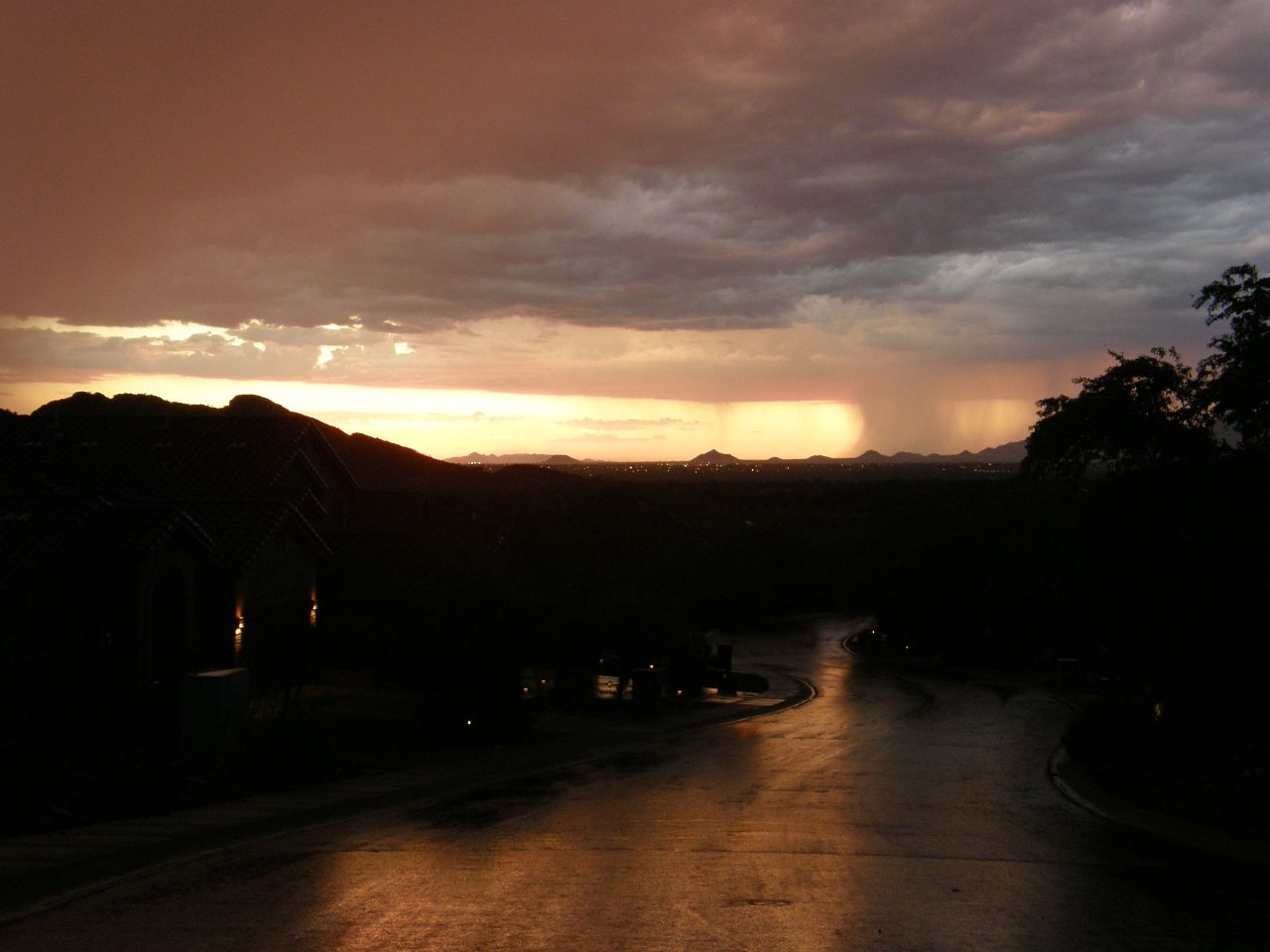
The image above, taken from my driveway, shows a distinctive rainshaft from a summer thunderstorm in the direction of Scottsdale, which is north of center-city Phoenix, Arizona. The images below, which I also took from my driveway, shows a ledge cloud that formed above the outflow front of a severe thunderstorm that is located to the left, out of the view of the camera. The outflow of this storm does not affect Gold Canyon, where I live, but flows through the valley behind the abrupt front of the Superstition Mountains, which gives a sense of physical scale of the storm. The following six images of the movement of this ledge cloud were taken about one minute apart, which gives a temporal sense of the speeds of the winds in this gust front.
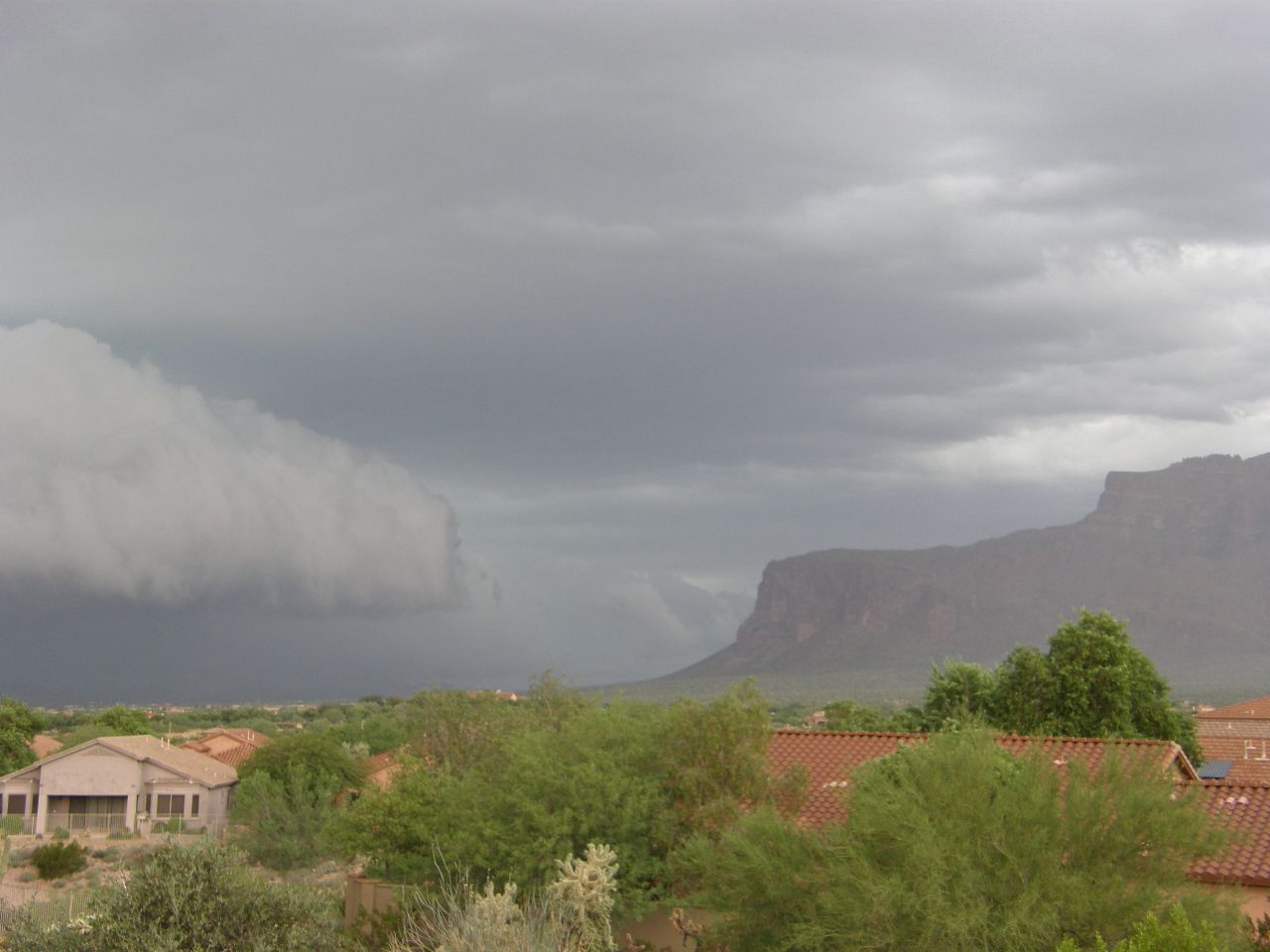
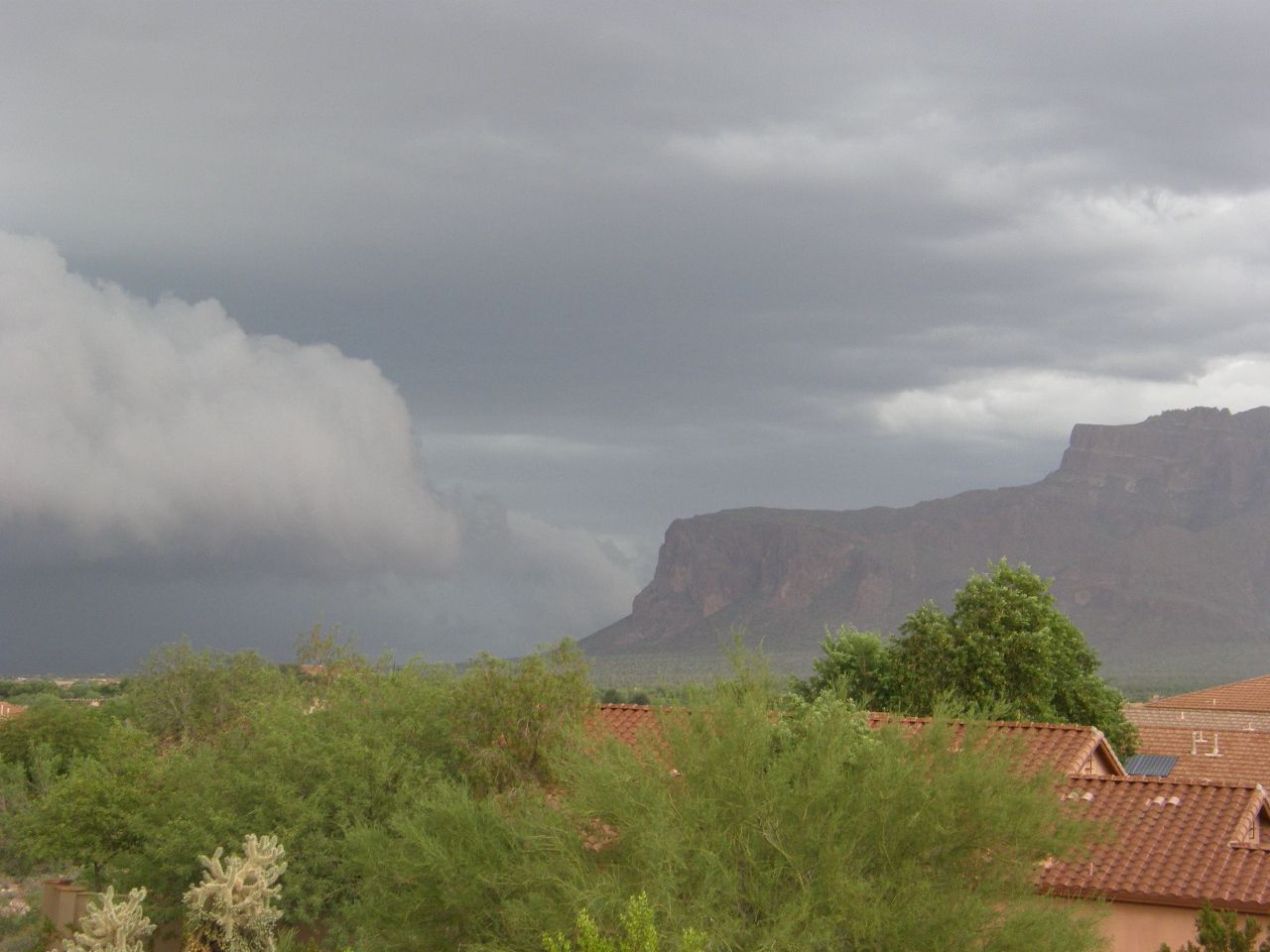
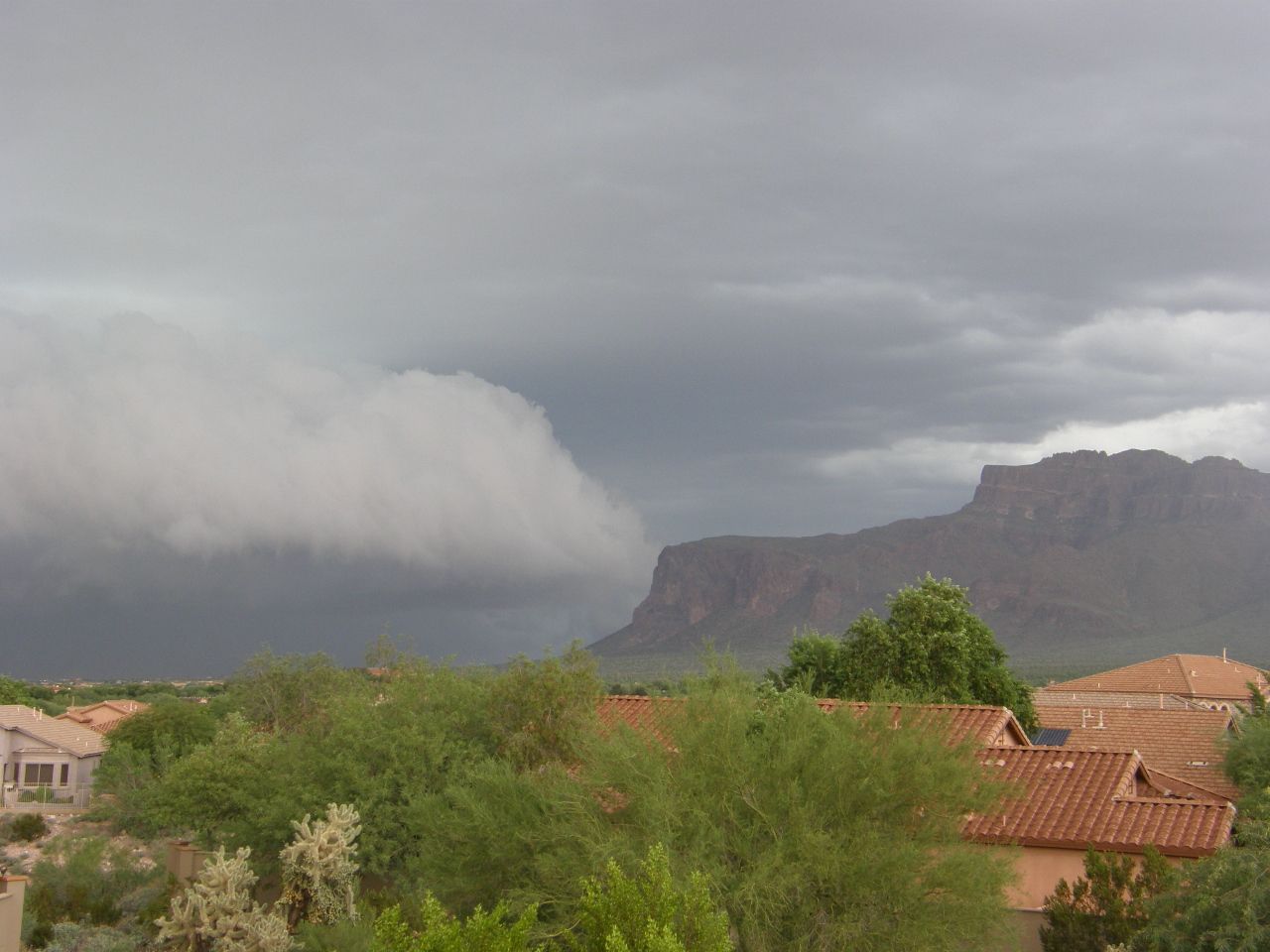
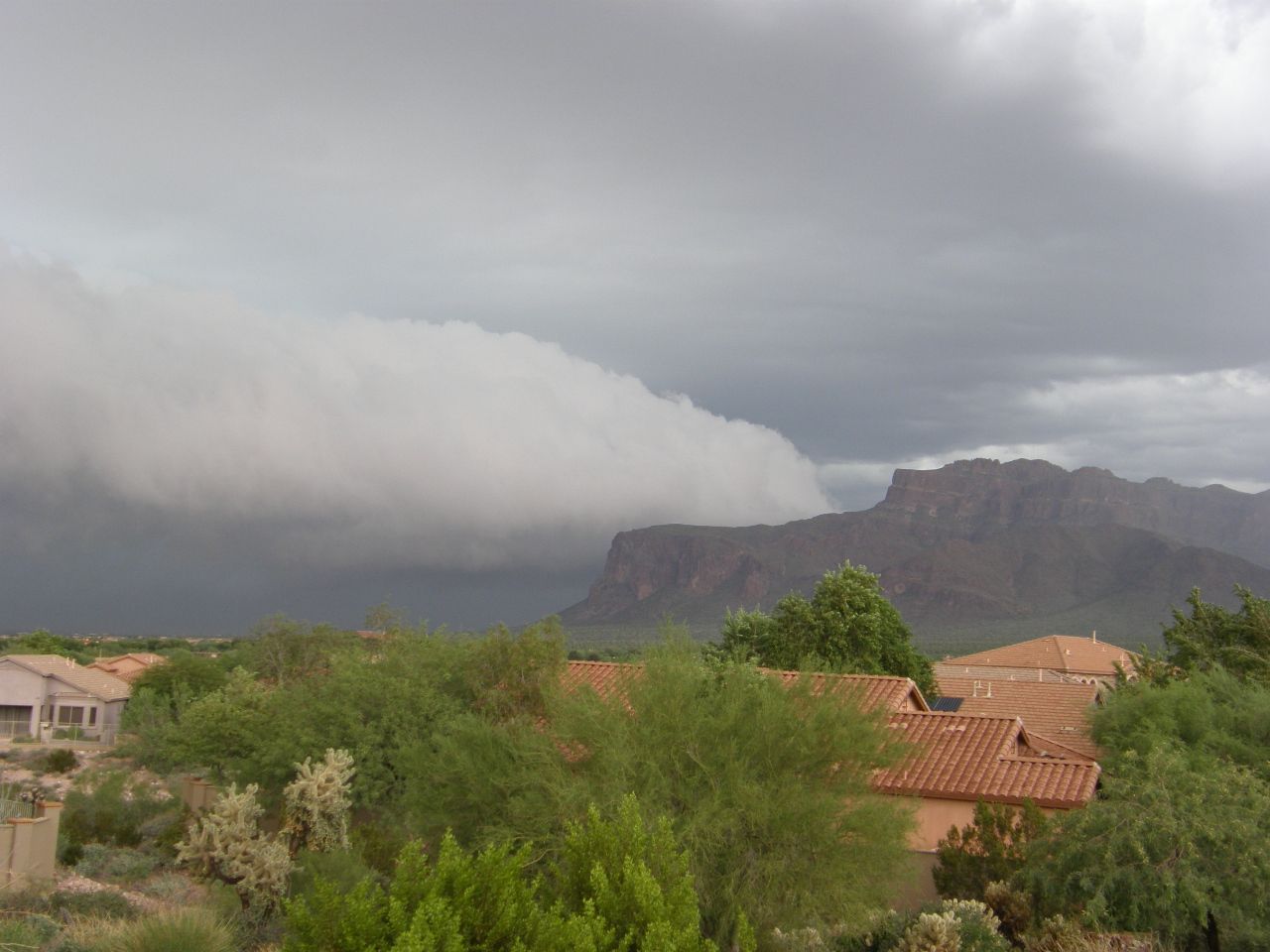
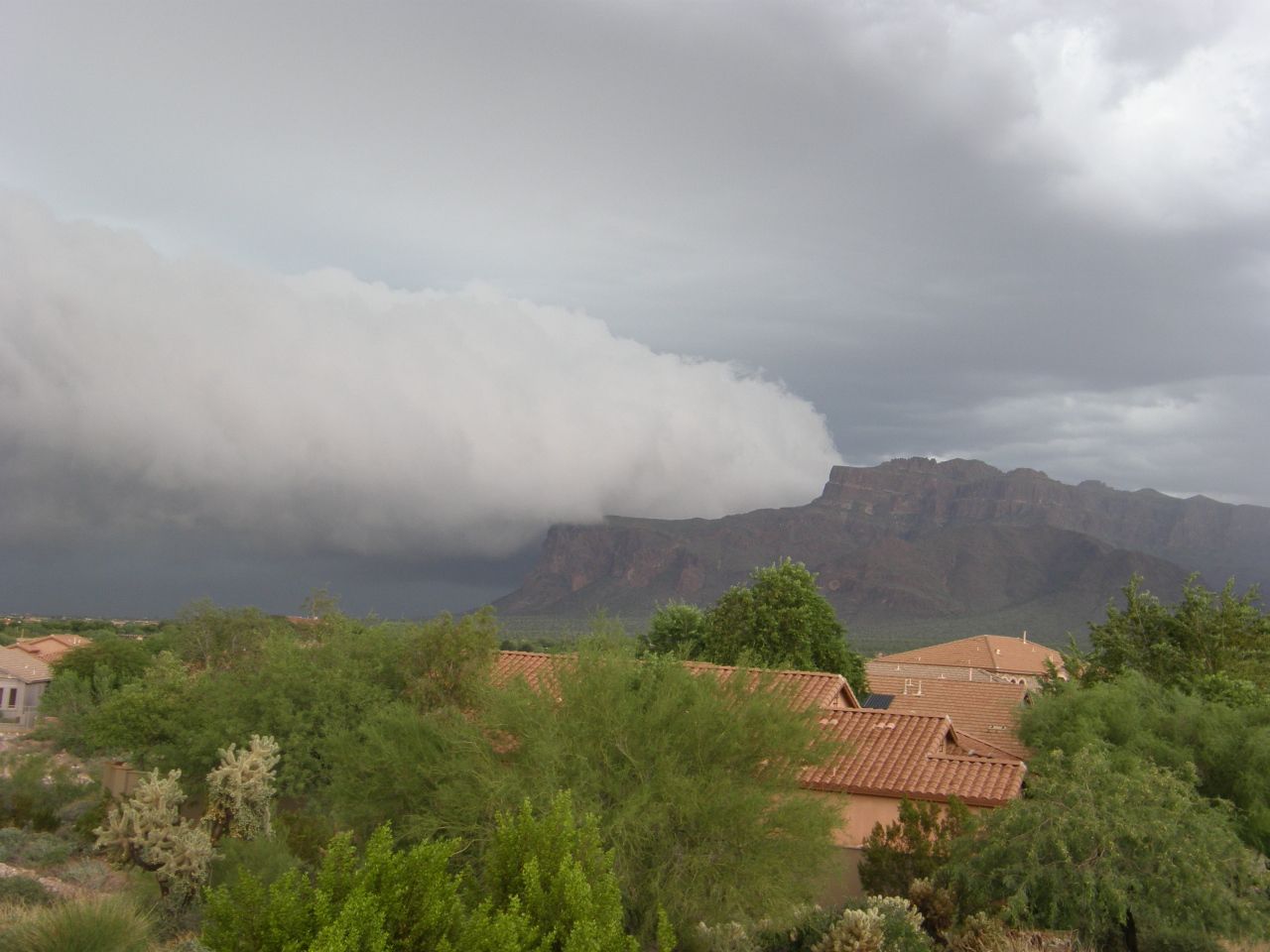
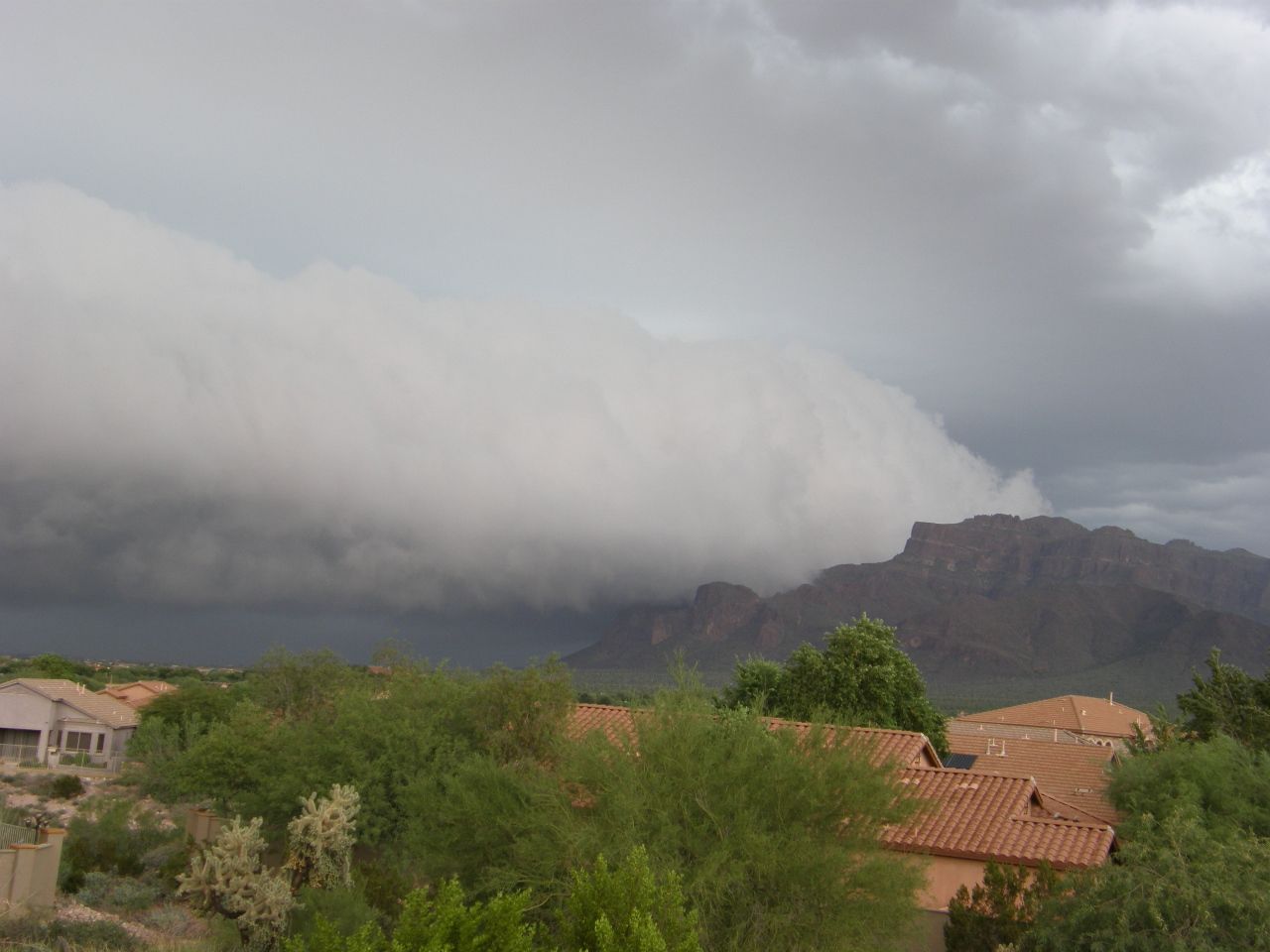
Sometimes these microburst winds in Arizona create a haboob -- an intense and dramatic dust storm. In Arizona these are more common in the region between Phoenix and Tucson than it seems to be in the Gold Canyon and Apache Junction area, perhaps because of our local mountaneous topography. Consequently I do not have any compelling images on this web site of local haboobs that I took myself. A Google search of "Phoenix haboob" will yield dramatic still images and videos of haboobs that have occurred in the Phoenix area but, fortunately, did not affect the portion of the city in which I live.
Between 9 PM and about 11 PM during the evening of 11 July 2017, a microburst thunderstorm swept across Gold Canyon, AZ. The thunderstorm produced about 2.5 inches of rainfall in less than 1.5 hours and created horizontal winds of about 65 miles per hour. The severe horizontal wind field occurred over a strip that was about 2 miles in width. With the excessive rainfall, the near-surface ground became saturated and temporarily lost its typical hardness and rigidity. Thus these linear winds toppled many of the shallow-rooted desert trees in the Gold Canyon development by simply blowing them down intact in the down-wind direction. The local Mountain Brook Gulf Course reported 19 uprooted trees on its fairways. Within the community there were many examples of broken branches on on otherwise standing trees too. There was also a lot of structural damage to buildings and, in particular, their tile roofs.
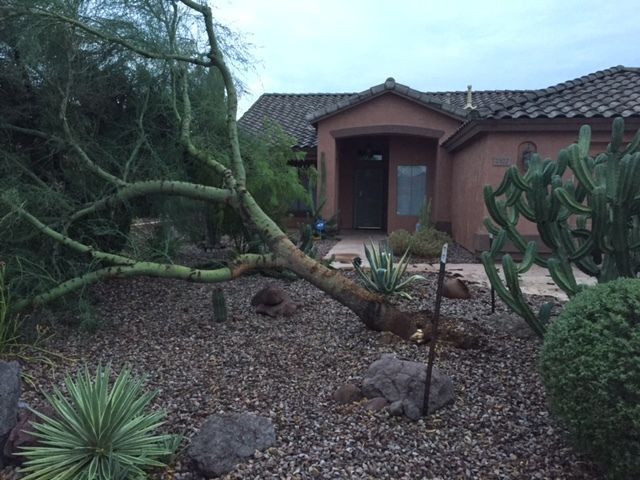
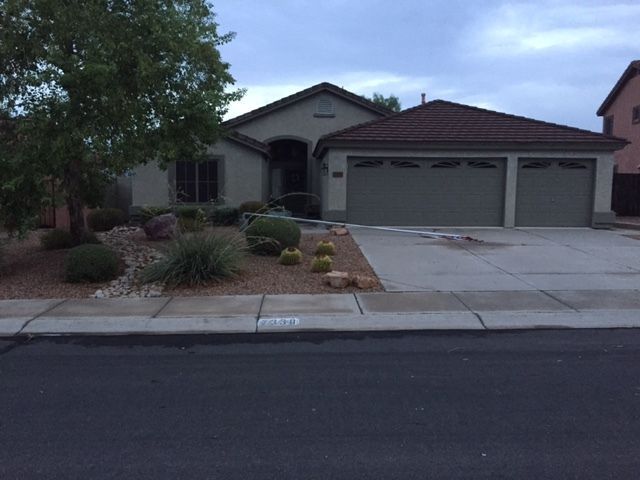
Straight line winds have toppled this tree and have bent the flagpole just above its base. The two pictures above and the one below were provided by John Talley who, like myself, is a member of the Superstition Mountain Astronomical League.
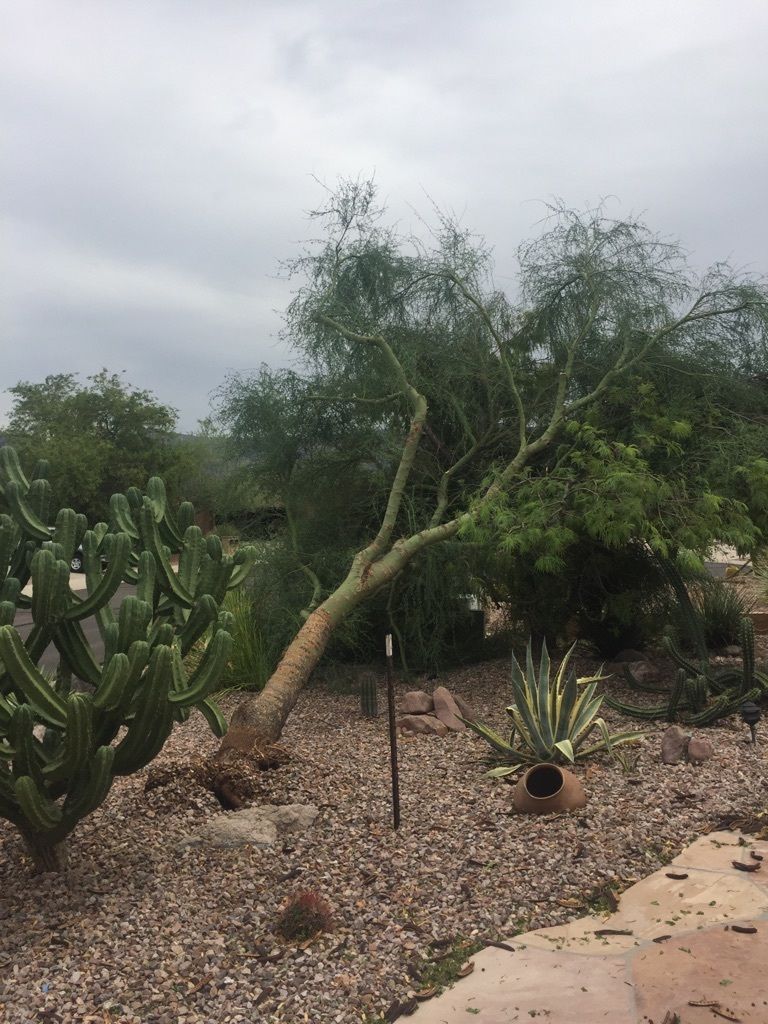
Ironically, of all the extensive damage to my own community, I took and retained only one image of the extensive damage caused by the microburst thunderstorm. It is the image below. The reason I took and retained this image is that the damaged tree shows what I believe to be evidence of spinning winds rather than the linear wind damage patterns presented above. The tree top on this standing tree has been, I believe, subjected to stronger damaging winds than the branches near its base. So I think there was, at least for a brief time, a swirl of the winds at this location. This damage pattern stands in contrast to most of the damage caused by the horizontal linear winds of the microburst thunderstorm.
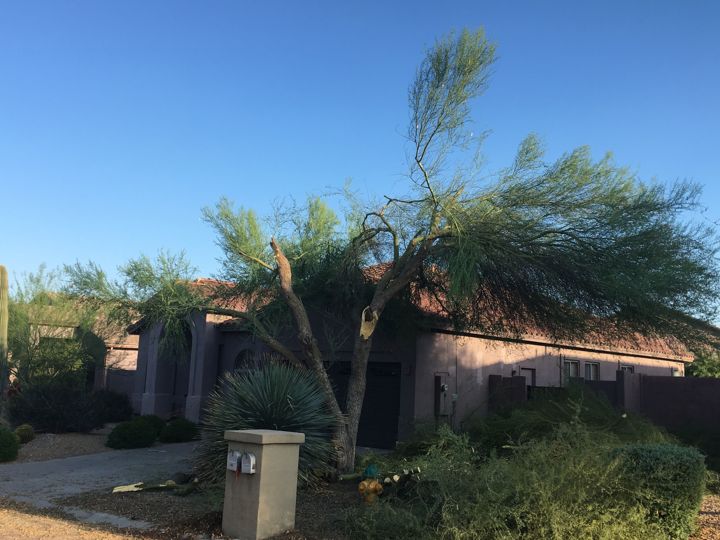
Below are some references to the 11 July 2017 microburst thunderstorm which struck the Gold Canyon area:
https://www.abc15.com/news/region-central-southern-az/other/downburst-winds-likely-caused-gold-canyon-damage
https://ajnews.com/damaging-storm-hits-gold-canyon/
http://www.fox10phoenix.com/news/arizona-news/gold-canyon-storm-damage










